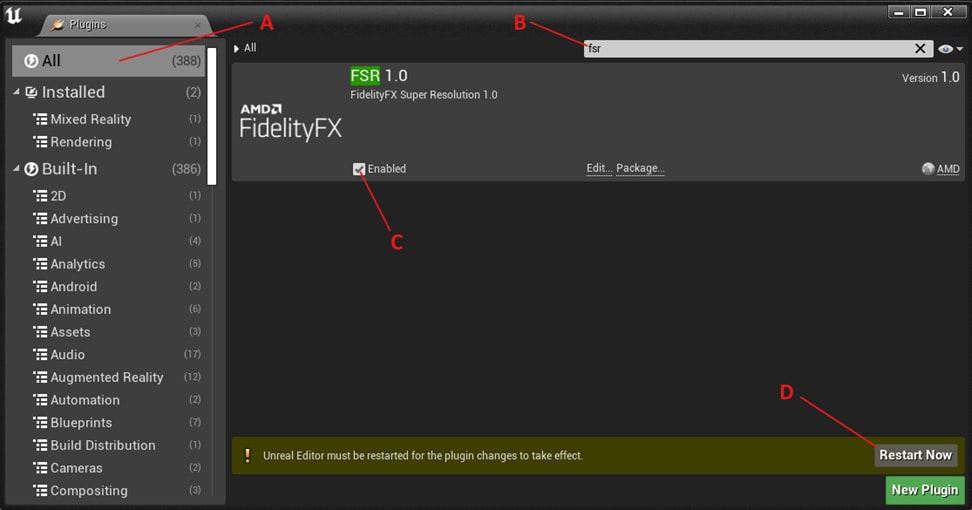AMD launched FidelityFX Super Resolution (FSR) earlier this year, with a handful of games supporting the feature. Now, FSR has arrived as a plugin for Unreal Engine 4, making it easier for developers to implement in their games.
With FSR now available as a plugin for UE4, we should see more games adopting the technology. AMD has also published an implementation guide on GPUOpen, where it briefly explains the recommended settings for the presets.
Like other FSR implementations, FSR on UE4 has four presets:
- Ultra Quality – produces an image with quality virtually indistinguishable from native rendering. It should be selected when the highest quality is desired. At recommended settings, it renders images at 77% of the display resolution.
- Quality – produces an upscaled image with a quality representative of native rendering, with a sizeable performance gain. At recommended settings, it renders images at 67% of the display resolution.
- Balanced – produces an upscaled image approximating native rendering quality, with a significant performance gain compared to native. At recommended settings, it renders images at 59% of the display resolution.
- Performance – visibly impacts image quality and should only be selected where needing additional performance is critical. At recommended settings, it renders images at 50% of the display resolution.
AMD also states that developers can use FSR alongside Unreal Engine 4 Temporal Anti-Aliasing with Upsampling (TAAU) or another temporal upscaling algorithm via hybrid upscaling. In these situations, the temporal upscaling algorithm will work as the primary upscaler, while FSR works as the secondary upscaler. AMD FSR is available starting on UE version 4.271.1. UE5 has yet to receive the plugin.
KitGuru says: Now that UE4 has the AMD FSR plugin available, it will be much easier for developers to implement the technology in their games. Moreover, it shouldn't take long before we see it in UE5, further increasing the range of supported games.
 KitGuru KitGuru.net – Tech News | Hardware News | Hardware Reviews | IOS | Mobile | Gaming | Graphics Cards
KitGuru KitGuru.net – Tech News | Hardware News | Hardware Reviews | IOS | Mobile | Gaming | Graphics Cards



